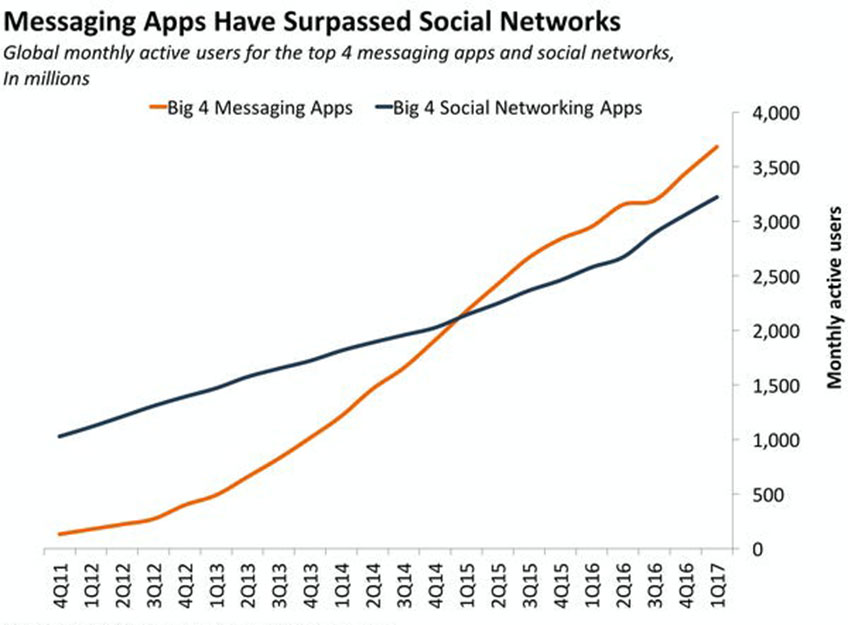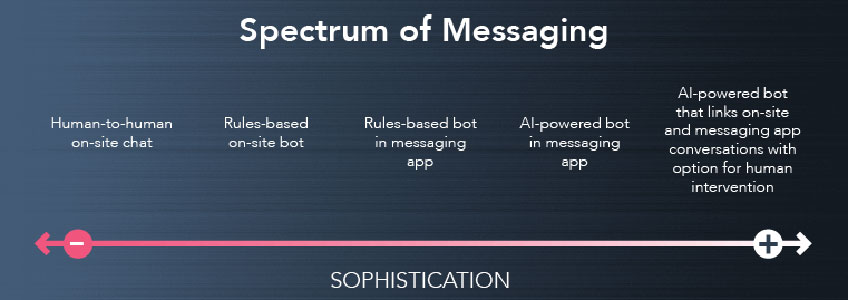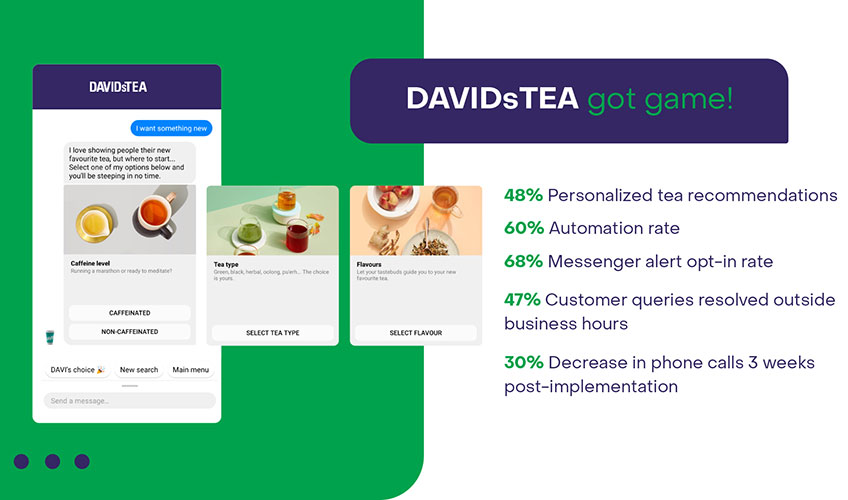It is mind-boggling how far the technology of chatting has come. Turn on a movie or television show that was filmed earlier than 2007 and you may find yourself thinking “if they had a smartphone, this conflict wouldn’t exist” – something I recently mused about in the context of the Shakespearean classic, Romeo and Juliet. Truly, the days of landlines and hand-written letters have fallen to a niche-y wayside. But how did we get here: a time where conversations can be started in seconds and brands have developed peppy customer service chatbots? And who is leading the way as these new chat features become more diverse and robust?
Let’s start with a brief history in the evolution of tech-based chatting!
The rise of modern instant messaging, chatting over the internet, began in the 1990s. In tangent was the birth of SMS (short message service), which had similar functionality as instant messaging but used a cellular network rather than internet connection. AOL Instant Messenger (AIM) was launched in 1997 and took control of the instant messaging marketing in 2006, but failed to monetize and was ultimately overtaken by Google Talk, MSN Messenger, Skype and others.
SMS dominated until 2012 before giving way to instant messaging apps, which have increased in popularity up until present day. Today, apps like WeChat, WhatsApp and Facebook Messenger are widely popularized. In fact, a study has found that nearly two thirds of people under 30 have stated that they prefer private message threads over “open forums and feeds” – explaining the stagnation of social media usage in Gen Z and Millennial audiences.


This has fundamentally shifted how people communicate and behave. In the age of instant gratification and everything-at-your-fingertips, consumers are increasingly expecting faster and more seamless service and responses from brands. This has reached a point where 69 percent of customers are more confident about brands that are reachable via messaging. Additionally, consumers want more personalization, with 83 percent of them willing to share data with a brand should it lead to a more personalized experience.
So, brands and marketers joined the wave in swarms. Enter: Chatbots.
It is important to first understand that not all chatbots are made equal. The sophistication of a chatbot depends on the advancement of the technology and how far it can take a customer towards a purchase or solution. For instance, a “rules-based on-site bot” would be limited to manually selected questions and answers, then prompting the customer to input their contact information for follow-up. Meanwhile, an AI-powered bot system can learn as it goes, gaining intelligence as customers interact with it. Having an option for human intervention is also an effective way to maintain engagement when more nuanced questions and tasks are at hand.


Chatbots now often live inside messaging apps. For example, Facebook has an offering for businesses to activate a chatbot so that consumers can ask questions via Messenger. This has been leveraged by Whole Foods, for which customers can receive personalized recipe ideas. In the spirit of fun and Millennial/Gen Z relatability, customers can also search up recipes with emojis.
Another sophisticated example is Davi by Davids Tea. This app has been designed to be supportive at any step of the customer journey, with personalized recommendations at the start to order tracking in the middle. It also features the option to transfer the customer to a real person for questions beyond the AI’s scope. As illustrated below, Davi has resulted in some impressive metrics within a year, strongly supporting their burgeoning transition to an e-commerce-only strategy.


In an industry with a special interest in competitive customer service, an innovative banking chatbot has stepped forward in the form of Capital One’s Eno. This “virtual assistant” can do the basics of checking a balance and paying bills online, but also has more sophisticated features like notifications about soon-to-expire free trials and fraud alerts. Eno was built in-house, with its algorithm based on real chat conversations between customers and representatives to allow understanding of “nuances in human communication.” For instance, Eno can understand that “activate,” “turn on my card” and “make my card work” are the same request. To implement an element of fun, the chatbot was also made compatible with emojis and casual conversation, with abilities like telling jokes and rejecting marriage proposals. Amusingly, Capital One discovered that 14 percent of messages to Eno were unrelated to banking, illustrating how the line between human and bot blurs with advanced chatbots and how they play a role in entertainment.
This is not an exhaustive list of places where chatbots are starting to pop up. New developments have been seen in mental health via apps like Wysa and the automotive industry with KIA’s Kian. The World Health Organization has developed a WhatsApp-based chatbot to answer questions and offer advice on COVID-19. Additionally, the education market has a surge of chatbots including popular language learning apps like Duolingo. As the impacts of COVID-19 are felt around the world, the applications of chatbots can only increase to satisfy the demand for digital service.
In addition to the diverse applications mentioned earlier, chatbots are also making significant strides in the realm of workplace communication and productivity. One notable example is www.clerk.chat, an emerging platform that leverages chatbot technology to streamline work-related tasks and enhance collaboration within organizations.In the context of the modern workplace, efficient communication is paramount. Chatbots like Clerk.Chat can serve as virtual office assistants, helping employees manage their daily workflows more effectively. These chatbots can assist with a wide range of tasks, from scheduling meetings and setting reminders to providing quick access to company information and policies.
The future of chatbots is truly limitless, especially as AI becomes more advanced and gains the ability to fulfil more nuanced and difficult requests. Trends illustrate that the demand for faster, better and more personalized will only drive chatbot innovations into more creative and mainstream usages in the future.

